GHESKIO Construction Update
Photographs of the Gheskio Health Clinic, Port-au-Prince, Haiti, from September 2015. The main building is completed. The steel frames of the pavilions are erected and their completion awaits for further funding.
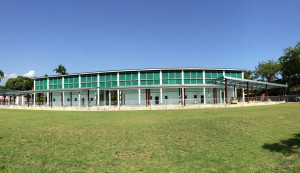
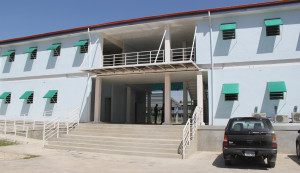
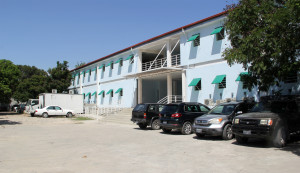
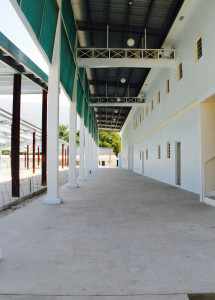
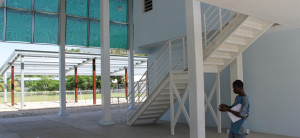
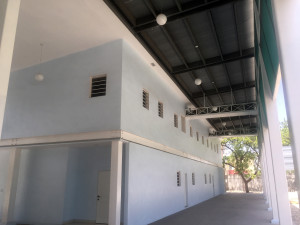
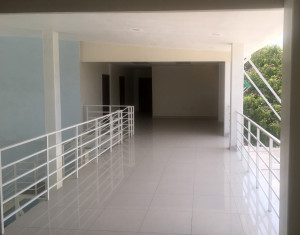
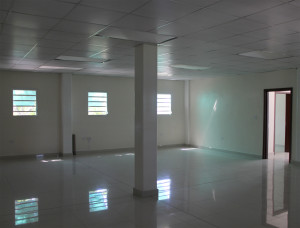
Photographs of the Gheskio Health Clinic, Port-au-Prince, Haiti, from September 2015. The main building is completed. The steel frames of the pavilions are erected and their completion awaits for further funding.








Construction Update | GHESKIO Family Health & Nutrition Center | PORT-AU-PRINCE, HAITI
Steel frame has been erected by Haitian work force, together with small American crew. Estimated Construction Completion: Fall 2014
GHESKIO & THE COMMUNITY SERVED:
The local community surrounding and served by GHESKIO consists of over 100,000 people living in slums and ‘tent cities’ on less than $1/day (as do ~56% of all Haitians). Malnutrition is widespread: Haiti’s malnutrition rates are among the world’s highest. One-third of Haitian children under age five are severely malnourished, and 40% suffer from anemia.
Since 1982, in partnership with the Haitian Government and Cornell University, GHESKIO has been offering free health care, including HIV counseling, AIDS care, prenatal care, and management of tuberculosis and sexually transmitted infections, and conducts research and training in HIV/AIDS and related diseases. In 2000, the Haitian government named GHESKIO a “Public Utility”, a designation reserved for institutions, which are ‘essential to welfare of the Haitian people’. In 2010, GHESKIO was awarded the Bill and Melinda Gates Award for Global Health for its outstanding contributions to the global health field.
Since the earthquake in January 2010 GHESKIO has expanded its mission to also provide comprehensive health care and community services, including reproductive health care, clean water, sanitation, food, security, education and social services.
GHESKIO FAMILY HEALTH & NUTRITION CENTER:
The new Family Health & Nutrition Center, designed by NYC-based firm Tonetti Associates Architects, represents GHESKIO’s new, comprehensive approach to nutrition, clinical care and community development. The design takes into account the many challenges of building in Haiti, while reflecting the purpose and program of the facility. Tonetti Associates Architects investigated sustainable and durable structural systems that can be constructed by a relatively unskilled local work force and chose cold rolled steel frame, which is lighter and resists lateral loads better than concrete frames. Steel frame has been fabricated by Blue Sky Building Systems (http://blueskybuildingsystems.com).
Funding: MAC Aids Foundation grant and private donations. Fundraising still in process to complete construction. Weill Cornell Medical College, a 501(c)(3) organization and partner of GHESKIO since its inception, receives donations.
www.weill.cornell.edu/globalhealth
Photograph of dancers: Jean Claude Coutausse Photography
———————————————————————-
RAM
The drums grip the heart
The dust leaps with the bass
The fleshy bees sway
The balcony heaves with the passion
The prostitutes glide and clatter
The suits come and go
The do-gooders huddle in the corner
While aid workers hold down the center tables
The Haitians dressed to kill – no that has passed
And Graham’s extras totter in the shadows
I sleep in the annex
Sliding down the hill
– Andrew B. Wright
The Hotel Oloffson is an inn in central Port-au-Prince, Haiti. The main structure of the hotel is a 19th century Gothic gingerbread mansion set in a lush tropical garden. The mansion was built as a residence for the powerful Sam family, including two former presidents of Haiti. The hotel was the real-life inspiration for the fictional Hotel Trianon in Graham Greene‘s famous 1966 novel The Comedians. During the 1970s and early 1980s, the hotel enjoyed a brief period of fame and good fortune. Celebrities such as Jacqueline Kennedy Onassis and Mick Jagger were regular guests. Throughout the political upheaval of Haiti in the 1990s, the hotel has been the regular performance venue of the mizik rasin band, RAM, famous for their protest music during the Raoul Cédras military dictatorship from 1991 to 1994. Their Thursday evening performances at the hotel became one of the few regular social events in Port-au-Prince in which individuals of various political positions and allegiances could congregate. Regular attendees of the performances included foreign guests at the hotel, members of the military, paramilitary attachés and former Tonton Macoutes, members of the press, diplomats, foreign aid workers, artists, and businessmen.
Challenges of Housing Production for the Poorest in the Developing World
Report on the 300 Dollar House Workshop, January 25-28 2012 at Dartmouth College
“The Three Hundred Dollar House, you mean three hundred per square foot?” A friend’s incredulity summarizes the responses I heard to the title of a workshop at Dartmouth College. He and I worked together on a project costing multiples of 300 dollars per square foot, his career is in construction, and he knows the price of a pound of nails. The thought of building a house for $300, even at the most minimal standards, seemed an impossibility.
The initial idea of the THDH* was the brain child of Vijay Govindarajan, a professor at the Tuck School of Management at Dartmouth College and Christian Sarkar, referred to as the disruptive fellow in the back. They conceived of the “brand” to bring attention to the issues of housing for the very poorest in the developing world. By provocatively setting the price that low they hoped to push architects, engineers, planners and financiers to explore innovative designs and economic models. They organized an online international competition to initiate the process. Coincidentally the competition drew 300 hundred entries.
From these entries a jury selected six finalists. Many of the finalists were able to attend a workshop hosted by Dartmouth in Hanover in January 2012. The workshop’s goals were to capture the energy sparked by the competition and to explore the steps necessary to create something that would cast a shadow. The workshop, organized by Jack Wilson of the Studio Arts Department, focused on Haiti because of Dartmouth’s connections to the country and its pressing needs.
In addition to the finalists, Dartmouth students and faculty from the engineering and business school, participants from Haitian groups and a handful of engineers and architect were invited. I was included because of my familiarity with designing and building in Haiti. For three intense days the participants wrestled with the issues of urban and rural housing, community development and financial models.
Two Haitian communities, one rural and one urban, were the focus for the workshop. Strong organizations within both communities had originally provided medical services and then branched into social services. Fond des Blancs, a stable rural community relatively untouched by the January 2010 earthquake, benefited from the St. Boniface Haiti Foundation. Cite de Dieu is an urban “slum” in Port-au-Prince. After the earthquake GHESKIO Center, a nearby clinic, filled a vacuum left by a weak and overwhelmed city government by providing not only community medical services but also other significant municipal functions.
During the workshop it fell to me to wear an unfamiliar hat. Instead of my architect’s role Jack asked me to lead the group on community development and infrastructure. We were charged with addressing eight areas:
This formidable list was initially an obstacle. We could not find the key to unlock the process of thinking about the issues of Fond des Blancs and Cite de Dieu. We had too many avenues and too little time and data. It was Jean St Denis, a community organizer from Fond des Blancs, who set us on the right track. He gently repeated until we listened “employment is the key”. He pointed out that even if it was possible to build a three hundred dollar house it still had no viability unless a person could afford it.
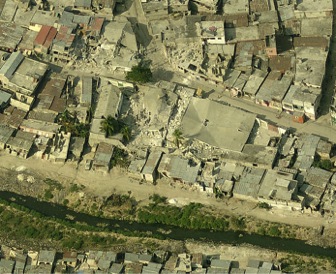
Cite de Dieux, Photo
With that insight we looked closely at the issues that inhibited the economic and employment picture of Font des Blancs. We acknowledged that as an island nation with minimal natural resources Haiti’s economic base will eventually lie in exporting their unique products overseas, but assuming that walking must come before running we decided to focus on the local market in town. A list of items available there was developed. The question was raised why there was no fish available at the market even though the town was only 20 kilometers from a coastal fishing village. Jean St. Denis concluded that the issues were not so much physically imposed as the result of culture and customs. He promised to return to Fond des Blancs and institute a motor bike delivery service for fresh fish preserved in ice.
We recognized that many of the issues of poor employment options were not so easily addressed and that it was presumptuous of us to propose solutions from Hanover for Haiti. The general consensus of the workshop participants living in Haiti was that the issue was not a lack of financial resources. There are non-governmental organizations and international governmental agencies looking for viable projects to support and fund. Haitian groups with plans and community backing were in demand. To help Fond des Blancs gain visibility we suggested that a formation of a community development council was a start. The council of the leaders and change agents of the community would analyze in a more thoughtful and through way the steps that we had started.
To that end we created a Facebook page Fond des Blancs as a simple step to help increase the visibility of the community. Please feel free to add your comments there.
Unfortunately we were forced to leave the issues of Cite de Dieu for another time or another group. Besides not having enough time we realized that the urban context had different circumstances. In particularly it is a more fluid and open system.
So if you have read this far and you still do not have the answer to the question “can you build a house for 300 dollars”, the answer is no, at least not in Haiti at the present moment. There does not seem to be a silver bullet for the issues of housing costs, much less the expensive infrastructure. Industrial housing solution is effective in areas with good transportation access and high site labor costs. Lowered costs generally only apply when the scale of production is hundreds, not tens, such as in Levittown, NY after WWII. Traditional materials and forms frequently effectively meet the needs of people who for financial reasons must build their housing in stages. Framing systems which over time may prove more cost-effective, but their introduction into the Haitian market is at a nascent stage.
Immediately after the earthquake there was a plethora of proposals for inexpensive relief housing from designers, architects and engineers of the developed world. Many of these proposals had little relation to Haitian needs and housing expectations, nor to the climate and construction realities of the country. Thankfully most proposals did not get beyond the talking stage.
At the Dartmouth workshop the two (rural & urban) housing groups had members who understood the issues relevant to Haiti much more clearly. The groups developed designs based on habitable standards and traditional materials and layout. They responded to the difficulties of building in Cite de Dieu, with the existing poor soil conditions and flooding. In Fond des Blancs the traditional form of front porch, sleeping quarters and rear yard for cooking were respected.
However, in both locations the costs were in the thousands of dollars, not in the hundreds – even when pared down to the “basic starter unit”. So if the number was wrong, does that invalidate the process? Without that number or another like it, the workshop would not have gotten off the ground. If you can harness the energy of the workshop into a prototype, if a student’s career takes on an added dimension, if the arrival of fresh fish in Fond des Blancs triggers the birth of a stronger market, then the workshop was a success.
By Nora Mertens
The company that I work for, Tonetti Associates Architects (TAA), has recently completed the design for a Family Health and Nutrition Center for GHESKIO (The Haitian Group for the Study of Kaposi’s Sarcoma and Opportunistic Infections) Clinic in Port-au-Prince, Haiti. Our involvement in Haiti, in the wake of the destruction left by the January 2010 earthquake, has led us to ask questions about what post-colonial critics call “neocolonialsm,” a term often used to describe developed countries’ involvement in the developing world; it implies a form of contemporary “economic imperialism,” In this article, I will explore these questions, also in light of my recent experience of visiting Port-au-Prince.
My first impressions of Port-au-Prince – after a mere 42 minutes flight from Miami – came from the passenger seat of a car with darkened windows as the driver sped, honked and bounced his way down the unpaved streets from the airport to the GHESKIO Clinic. As I looked out, I saw all that I had heard about Haiti: the poverty, the vast tent cities of those who lost their homes in the earthquake (today more than a half-million people still live in tents), the heaps of garbage bordering the roads. At the GHESKIO Clinic I saw people in pain, patients waiting patiently for their treatment or standing in long lines to pick up their HIV medicine. I heard the deafening city noise and felt the immense heat and humidity that hits you in your face every time you leave an air-conditioned building or car.
During the following days we spent at the GHESKIO Clinic, doctors would mention on a regular basis that they had lost yet another cholera patient. There was much that was disturbing, but also much that was impressive. I saw beautiful people who showed strength, perseverance, and even humor in the face of suffering. The images of destruction were contrasted by images of great natural beauty, such as the view down into the valley from our hotel terrace, where foreign NGO workers would enjoy colonial breakfasts.
On my flight back to JFK, I became aware of the conversations around me; most passengers were NGO workers, returning home from Haiti. They all seemed to have stories of prosthetic devices or churchy missions that they exchanged with serious yet content countenances. In a New York Times article entitled “Haiti’s New Tourists” (September 6, 2011) the Haitian journalist Isabelle Dupuy writes, “A new form of tourism is emerging. Through hard work, compassion and – let’s say it – a bit of misery voyeurism, it offers redemption with a tan. (…) In exchange for your money and your help, Haiti offers immediate, terrorist-free access to a version of the human condition right near home. You can be digging a well in Leogane in the morning and be telling the tale in Manhattan in the evening.”
I don’t mean to sound dismissive of foreigners’ contributions to Haiti. It seems that without their money, clothes, aid workers, medical knowledge, and yes, perhaps architectural designs, there would be little hope at all in Haiti, especially post-earthquake. However, I have to think of of the words of Philippe Gerard, who writes in his book, Haiti: The Tumultuous History – From Pearl of the Caribbean to Broken Nation, “the answer to this oft-mentioned question – what the United States should do to help Haiti – is simple: As little as possible.”
According to Girard, the term “foreign neocolonialism” is a common refrain in Haiti today, despite the aid-donor’s good intentions. He explains how foreign help can do more harm than good by creating conditions of dependence.
So what are we left with at TAA in terms of justifying our involvement in Haiti? How can we help developing countries appropriately, when we don’t find ourselves able to turn our backs?
These questions about appropriate aid have particular relevance also to the field of architecture. In a New York Times article entitled “Hands off our Houses” (June 1, 2011), Mathias Echanove and Rahul Srivastave explained some of the issues that may arise when architects from so-called developed countries assist in low-income housing projects in the developing world. Echanove and Srivastave discuss a competition where students, architects and businesses were asked to design a prototype for a $300 house to improve the lives of millions of urban poor around the world. Unfortunately, “the person whose input would matter most is left out of the competition: the person who is supposed to live in it.” Reality is more complex than the contest implies.
Echanove and Srivastave detail the potential problems with the project by discussing its applicability to Dharavi, a slum in the outskirts of Mumbai, where space already is scarce and a typical home is worth at least $3000. Houses are upgraded as income increases, which wouldn’t be possible with standardized $300 houses. Also, because construction is an important local industry in Dharavi, pre-fabricated $300 houses – built with non-domestic materials – would put many people out of business: “The $300 house responds to our misconceptions more than to real needs. The dynamic needs, interests and aspirations of the millions of people who live in places like Dharavi have been overlooked. While businessmen and professors applaud the $300 house, the urban poor are silent, busy building a future from themselves.”
Despite the potential problems articulated by critics like Girard, Echanove and Srivastave, I believe that there is a way for foreigners to effectively assist a country in need, but it requires some thorough investigation. If we want to make a meaningful difference, we should discover people’s real needs, interests and aspirations. We cannot know and should not assume what people are in need of, but should instead question, listen and watch. We cannot find a deeper understanding of a place, its people and their needs without taking into consideration the results of thorough anthropological research. In my opinion, we can get glimpses of truth if we are willing to make the effort.
As we engage in this process, we must also look to ourselves. Why do we want to intervene? Is it perhaps about control, dependence, superiority? Are we helping in the right places? Since the earthquake, Haiti has had more nongovernmental organizations working on its shores than any nation in the world save India (which is a hundred times more populous). Do we find there is somehow more honor in helping the people of Haiti than in helping the millions of people living below the poverty line in the United States? Is it possible that our state and economic institutions dictate in which direction we are looking, and with what kind of attitude?
We must also question the sources of information that feed these motives. It is important to be aware of what journalist Gbemisola Olujobi calls “disaster pornography.” Reports that are biased and sensationalized sell, even if they generalize, are inaccurate, and dismiss any potential for progress.
A recent study by the Trans Africa Forum that looked at stories on Africa by The New York Times and The Washington Post found that they tended to fall into three categories: “AIDS, development and conflict.” Western media blocks out “Africa’s stock market, high rises, internet cafes, heart surgeries (and) soaring literacy.” This kind of disaster reporting causes negative perceptions that lead to lower levels of foreign investment, which could otherwise contribute to growing a stronger economy.
Despite reliance on foreign help being one of the main causes of Haiti’s misfortune, according to Philippe Girard there are in fact ways in which the United States could help. Besides assisting in short-term disaster relief in the case of a major hurricane or earthquake (here pre-fabricated $300 houses may come in handy as a more sanitary and robust alternative to tents), US businesses could help creating the conditions for lasting self-driven economic growth in Haiti by investing in areas where Haiti has a competitive advantage, like labor-intensive industries, handicrafts and tourism.
So how have we at TAA justified and conducted our engagement in Haiti in light of all of these issues surrounding foreign assistance? For one thing, we responded to a real and immediate need. After the earthquake, cholera and malaria spread easily in the unsanitary conditions of refugee camps and tent cities. The GHESKIO clinic staff asked for our help because there was a lack of qualified architects in the country.
For another thing, we did our research. The TAA staff visited Haiti five times during the design process in order to gain insights into the needs of future patients. We observed the use of the current buildings, had numerous conversations with the clinic’s staff, and used all of this information in the design. Since most of the patients cannot read, we made navigating the interior simple and clear. Additionally, the design incorporates an internal shaded covered street, popular in Haiti, which creates natural ventilation and allows for children to play about during the long waiting times.
Finally, we made sure to examine our motives. We believe that any creative process requires introspection. We have not made any profit from the project, and from the beginning, it was our priority hand over all construction documents to a Haitian construction manager and local contractors.
Through our work with the GHESKIO Clinic and our experiences in Haiti, we have grown personally and as a firm. Although we did not make a monetary profit, it has been a deeply valuable experience for us. We believe in Haiti’s future and encourage everyone to keep asking, “How can we help?” All the answers are out there.
We have successfully turned over all construction documents to the Haitian construction manager. Haitian contractors are currently bidding on the project. We are investigating stabilized earth as building materials.
All photos below were taken on our recent 2-day visit to Port-au-Prince/Haiti. TAA is currently designing a Family Health and Nutrition Center for GHESKIO Clinic in the slums of Port-au-Prince. GHESKIO offers HIV, tuberculosis and cholera treatment free of charge to the poorest of Port-au-Prince’s population.
While we are still finding it hard to adequately describe post-earthquake Port-au-Prince/Haiti as we have experienced it during our last visits, we hope that the images below will provide at least a small glimpse into the city’s current reality. Most pictures -except for the ones taken in GHESKIO Clinic- were taken through dusty car windows while speeding through the streets of Port-au-Prince.
All images ©Nora Mertens, 2011
We are proud to share some more information about our involvement in this both challenging and rewarding project and GHESKIO Center.
After the devastating earthquake in Haiti (January 2010) and due to increased needs, GHESKIO Clinic, a pioneer in the research and treatment of HIV/AIDS and tuberculosis in Haiti, has enlisted Tonetti Architects (TAA) to design a new facility in an effort of expanding their services; not only treating and consulting the poorest of Port-au-Prince’s slums, but also the inhabitants of the tent cities (refugee camps).
The Center, to be built by Haitians, will provide nutritional guidance to new mothers, and integrate obstetrics, gynecology, pediatrics, adolescent, family planning and research within a single complex.
We have visited Haiti twice during the past months to discuss the project with the GHESKIO staff. In the process we gained an understanding of local climatic, environmental and social conditions.
Organized around an open air pedestrian street, our design makes use of natural ventilation and the latest technology on earthquakes and hurricanes.
About GHESKIO
Cornell’s GHESKIO (The Haitian Group for the Study of Kaposi’s Sarcoma and Opportunis tic Infections), a nongovernmental research and treatment center, was established in 1982 in Haiti, the WesternHemisphere’s poorest nation and the one with the highest HIV burden. It was the first institution worldwide fighting HIV/AIDS and tuberculosis and counseling families of those infected.
The clinic has continued its free medical aid, never closing its door to patients in nearly 30 years, and has quickly expanded its treatment and research to other sexually transmitted infections, tuberculosis, diarrheal diseases, blood safety and the prevention of congenital syphilis.
Since the earthquake in January 2010, GHESKIO has expanded its services and its outreach to the local communities (inhabitants of slums and tent cities). GHESKIO has been dedicated to the treatment of cholera (250,000 people affected since the outbreak in October 2010), offered humanitarian relief to 7000 refugees, and provided clean drinking water and sanitation to more than 1000,000 people of Port-au-Prince’s slums.
The clinic has rebuilt most of its buildings that were destroyed by the earthquake, hiring unemployed Haitians staying in the organization’s refugee camp to complete reconstruction. Vocational education classes have been started to help prepare adults in the community for employment; recently GHESKIO has opened an elementary school to make free education available to the refugee camp local community.
Numerous organizations, ranging from the Clinton Bush Haiti Fund to MAC Aids Foundation and Cornell Community, donate money to GHESKIO.
In October of 2010 I spent four days in Port au Prince, Haiti, working with a medical team on plans for a new medical facility. Since this hardly qualifies me as an expert on Haiti, the following are simply personal observations.
The current conditions in Haiti are so far beyond the norms of American life, it is difficult to discuss about them with someone who has not been there. It is too hard to find words to describe Port au Price’s dust, garbage, traffic, rubble in the streets and the collapsed building many of which may still contain human remains. It is also hard to capture the quiet politeness of the Haitian people and their dogged pursue of recovery: their ability to accept, to adapt and to move on.
I cannot speak to the violence, the crime and corruption. I did not see it. I stayed within a protected cocoon of walls, security and drivers. The refuge tent city, which we visited, seemed to be a model of care and organization. For example the medical team I was with had been told by the camp doctors that they had identified two children with TB. They took us to their parents’ tent; the children were there and the parents confirmed that the children were receiving treatment. With the potential level of chaos within the tent encampments this is a commendable level of organization.
Before arriving in Haiti I did my homework. I reviewed the proposals of American architects and engineers for the prototype for the minimal dwelling for Haitians. Concepts from shipping containers to fiber composite panels have been proposed.
My opinion is that many of these well intentioned efforts are misinterpretations of the real need. Haitians in their homeland are like Haitians in New York. They are self reliant and tough survivors. They do not need housing units plopped into their lap. They need help with construction skills so they can do for themselves. They need training to take advantage of the materials available to them. They need the skills to rebuild for themselves.
Teach a person to fish.
Refer to this article in the NY Times for additional thoughts.
